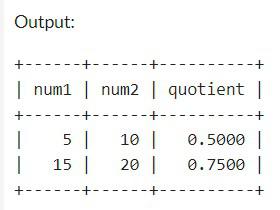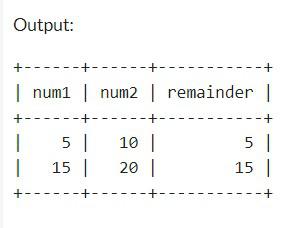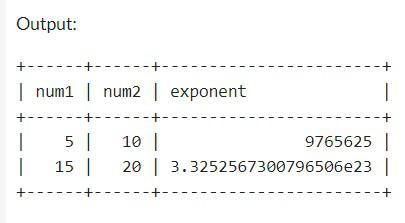Arithmetic operators in MySQL can work with numeric operands and hence carry out mathematic operations within MySQL queries. MySQL supports only a small set of arithmetic operators (+, –, *, /, and %) which is equivalent to the Mainstream calculator operations.
Apart from these conventional functions of arithmetic operators, MySQL also has a set of customary procedures. Besides these Operators and Functions are necessary in the MySQL databases for the numerical calculation and sorting of data. In this post, we are going to read and discover the arithmetic instruction signs.
Using Mathematical Operators
The arithmetic operators of MySQL acted as tools to handle mathematic operations on the numerical values of the queries and statements. There are a set of arithmetic operators such as addition (+), subtraction (-), multiplication (*), division (/) and modulus (%).
Such operators need to be employed in conjunction with other SQL functions to top up complex queries. One should bear in mind that MySQL is based on unique principles of evaluating expressions, nevertheless, it applies the standard order of operations which means parentheses must be used for working with calculations in the appropriate order. We will learn the order of operations in more detail later on. We will see that article next.
Understanding Arithmetic Operators
Arithmetic operators in MySQL are prevalent and can be applied to numeric ops to complete many different mathematical operations in SQL queries. Let’s delve into each operator’s functionality:
1. Addition (+)
The summation operator (^{+}) is used for adding numbers, and mutual operation forms the sum.
2. Subtraction (-)
When using the subtraction operator (-) to subtract one numeric value from another, a difference is obtained which is the result.
3. Multiplication (*)
The multiplication operator symbol (*) multiplies both numbers, consequently producing a product.
4. Division (/)
The division operator (/) takes the root of two (or more) numbers and results in a quotient, or a solution.
5. Modulus (%)
The modulus operator (%) returns the remainder of the quota by dividing a numeric value into another numeric value.
They are primary arithmetic operators that gradually flow into mathematical calculations within MySQL queries, where fundamental functions are carried out for that purpose.
Order of Operations
MySQL, of course, uses the PEMDAS/BODMAS order of operations for processing the sum. But, in the case when you need to, they can still be used to keep the default precedence intact by allowing users to control the sequence of calculations within arithmetic expressions.
Syntax with Example
MySQL, one of the most popular relational database management systems, offers a wide array of functionalities to manipulate and retrieve data. Let’s explore the various mathematical operators available in MySQL with detailed examples and outputs:
1. Addition (+)
The addition operator (+) in MySQL is used to add numeric values together. Let’s consider a table named numbers with two columns: num1 and num2.
CREATE TABLE numbers (
num1 INT,
num2 INT
);
INSERT INTO numbers (num1, num2) VALUES (5, 10), (15, 20);
Output:

Input Table
Now, let’s retrieve the sum of num1 and num2 using the addition operator:
SELECT num1, num2, num1 + num2 AS sum FROM numbers;
Output:

output table
2. Subtraction (-)
The subtraction operator (-) in MySQL is used to subtract one numeric value from another.
SELECT num1, num2, num1 - num2 AS difference FROM numbers;
Output:

output table
3. Multiplication (*)
The multiplication operator (*) in MySQL is used to multiply numeric values together
SELECT num1, num2, num1 * num2 AS product FROM numbers;
Output:

output table
4. Division (/)
The division operator (/) in MySQL is used to divide one numeric value by another.
SELECT num1, num2, num1 / num2 AS quotient FROM numbers;
Output:

output table
5. Modulus (%)
The modulus operator (%) in MySQL returns the remainder of dividing one numeric value by another.
SELECT num1, num2, num1 % num2 AS remainder FROM numbers;
Output:

output table
6. Exponentiation (POWER())
Although MySQL doesn’t have a built-in exponentiation operator, you can achieve exponentiation using the POWER() function.
SELECT num1, num2, POWER(num1, num2) AS exponent FROM numbers;
Output:

output table
These examples illustrate how to use each mathematical operator in MySQL along with their respective syntax and outputs. By incorporating these operators into your SQL queries, you can perform a wide range of arithmetic operations on numeric data stored in your database tables.
Conclusion:
In this guide, we have explored the mathematical operators available in MySql, which are addition, subtraction, multiplication and division, modulus, and exponential operators. In a nutshell, operators like these, play a crucial role in the whole algorithmic proficiency of SQL; they allow users to work with numbers within queries and promptly process the data.
Maths operators in MySQL carry out calculation processes and take care of processing numerical data within queries written in SQL. Through the exploitation of these calculators accordingly, logged-in users can use them to perform a collection of equations and [data] accuracy activities. Being familiar with the functionality and usage of relational algebra operators (where they are located and how can be used to retrieve the needed information in the database) is crucial for optimizing query performance and for achieving accurate results in MySQL database.
Share your thoughts in the comments
Please Login to comment...